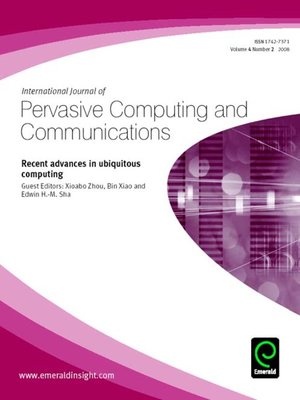International Journal of Pervasive Computing and Communications, Volume 4, Issue 2
ebook ∣ International Journal of Pervasive Computing and Communications
By Xioabo Zhou

Sign up to save your library
With an OverDrive account, you can save your favorite libraries for at-a-glance information about availability. Find out more about OverDrive accounts.
Find this title in Libby, the library reading app by OverDrive.



Search for a digital library with this title
Title found at these libraries:
| Loading... |
We are moving towards ubiquitous computing era, in which computing and communications happen all the time, everywhere. Its services will invade every aspect of life to the point that they are disappearing inside all sorts of appliances. The idea of such an environment emerged more than a decade ago and its evolution is due to the natural outcome of research and technological advances in embedded systems, pervasive computing and communications, wireless networks, mobile distributed computing and agent technologies, improved battery technology, and the emerging flexible software architectures. Its explosive impact on academics, industry, government and daily life can be compared to that of electric motors over the past century but promises to revolutionize life much more profoundly than elevators, electric motors or even personal computer evolution ever did.
This International Journal of Pervasive Computing and Communications e-book is to report both theoretical and practical solutions to some of problems and technical challenges in ubiquitous computing, and to identify new areas of research. In conjunction with the 2006 International Conference on Embedded and Ubiquitous Computing (EUC-06) held in Seoul, Korea, on August 1 – 4, 2006, the articles in this e-book represent recent progresses, including middleware techniques for context-aware computing, energy-efficient clustering algorithms and traffic-adaptive MAC protocols for wireless sensor networks, concurrency control for mobile transactions, and a novel speech and character recognition engine for mobile applications. All of these papers not only provide novel ideas and state-of-the-art techniques in the field, but also stimulate the future research activities in the area of ubiquitous computing.






